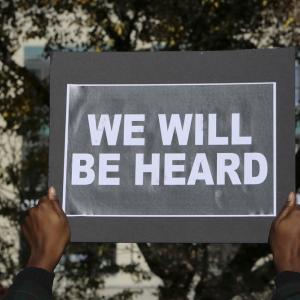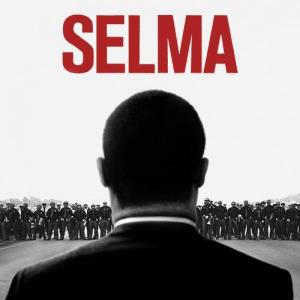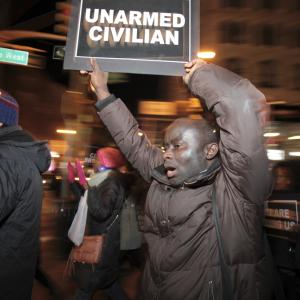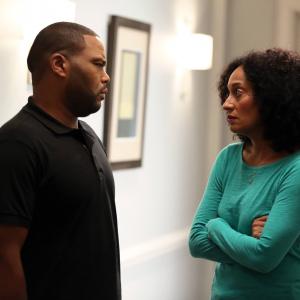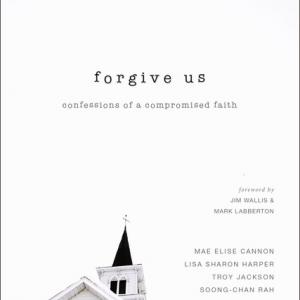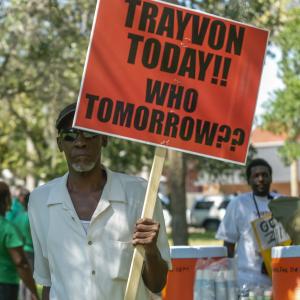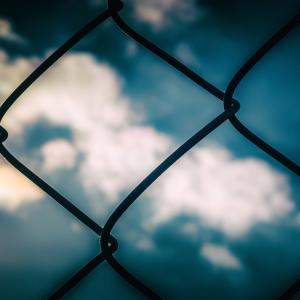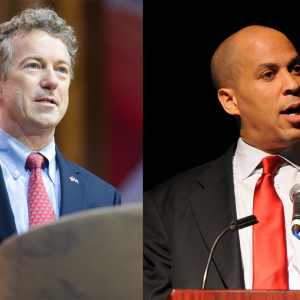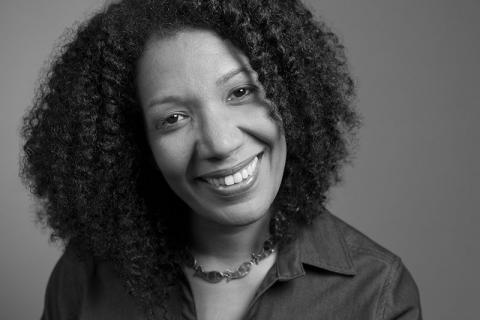
Lisa Sharon Harper, a former Sojourners columnist, is the founder and president of Freedom Road and author of Fortune and The Very Good Gospel. You can follow her work at lisasharonharper.com.
Posts By This Author
Black 'Future' Month
I cringed. Recently, I sat watching a cable news broadcast — can’t remember which one. What I do remember is it featured people doing good in the world … and it made me cringe.
Lots of people were highlighted, but the two young black people they featured both shared the same general narrative: So and so had a hard life. He came from poverty. She came from abuse or neglect. But they rose above. Now look at all they’ve accomplished. It was striking. None of the stories of white people started with this narrative. Rather, theirs usually went something like: Little Suzy or Johnny took a class project and turned it into a major non-profit that helps thousands of orphans … in Africa.
No matter where you tuned into this broadcast, blackness unconsciously was associated with hardship and overcoming while whiteness was associated with genius and compassion.
I sat there thinking: The truth is we have had centuries of hardship to press through. Our history is present, the good and the bad. As in Toni Morrison’s Beloved, the ghost of slavery haunts us. It affects our present. But it’s not just the past that haunts us. It is the same basic oppression of yesteryear —confinement, control, and disregard for black lives. So, it makes sense that the stories of our overcomers are as potent in current-day narratives as they are in history.
Jackie Robinson, Joe Lewis, Paul Robeson, Zora Neale Hurston, Billie Holiday, were the overcomers of our past. The black children in that broadcast were the overcomers of our present.
But what about the black future? One hundred years from now, will my family’s descendants still have to watch featured stories of black people doing good that always begins: So and so had a hard life?
During Black History Month we typically look back on all the accomplishments of those who paved the road for generations to come. But this month, we have been inspired by the #BlackLivesMatter movement to look forward to another kind of future for black men, women, and children.
A History of (Non)Violence
I WALKED THROUGH the halls of the Rosa Parks Museum in Montgomery, Ala.—slowly. Original documents lined the walls of the nation’s central memorial to the local actions that helped trigger the national mass movement for civil rights. To skim would have been a sacrilege. Each document was evidence. Evidence of struggle. Evidence that America’s apartheid happened. Evidence of a miracle.
The museum is like a labyrinth. Each room builds on the last, adding color and depth to a reality most of the nation has only experienced in the two-dimensional contours of sepia-toned documentary footage and pictures.
I entered the room with the kitchen table where Martin Luther King Jr. dropped to his knees and prayed, weeping, scared, and still holding onto the last vestiges of his personal dream for a middle-class preacher’s life. For my tour group, the room was about that table, but the documents lining the walls like wallpaper caught my eye.
One stood out. It was a full-page newspaper ad with a letter from the White Citizens’ Council of Montgomery to the blacks of Montgomery. The letter pleaded with the black citizens to “stop their violent attack on their city.”
The first time I read “Stop this violence,” I was befuddled. What violence?
To the Women: #MarchOn! — An Interview with 'Selma's Niecy Nash
I grew up in a household run by a woman of the civil rights movement. My mother, born Sharon Lawrence in 1948, was a teenager when she joined the Student Non-Violent Coordinating Committee in 1966, one year after Dr. King’s legendary march from Selma to Montgomery and President Lyndon B. Johnson’s passage of the 1965 Voting Rights Act. With the foundations of progress and protection laid, there was still much work to be done. My mother was based in Philadelphia, where she helped establish one of SNCC’s embattled northern offices.
A few years back, as I fished through boxes brimming with old papers and notepads, I discovered handwritten notes from James Forman to my mother. Forman offered detailed instruction to the then 18-year-old young woman who would become my mother only a few years later. Her job was much like mine is now: church outreach. The way she tells it, there were only a few churches in Philadelphia willing to offer their pulpits for movement people to speak. It was her job to secure those pulpits when giants like Forman, Stokely Carmichael, and others came to town.
I grew up aware of the women of the civil rights movement — my mother was one of them.
Perhaps that’s why I was so struck by the rare effort made by the film Selma to highlight the roles of women in that struggle, which by many accounts was the high-water mark of the civil rights movement.
Top 5 Resources for Community Dialogue on 'Selma'
Just as Selma opened in wide-release I began to receive requests for advice on how to lead churches and faith communities through discussions of the film. Years ago, I used to lead these kinds of dialogues in my capacity as the Greater Los Angeles director of racial reconciliation for a college-based parachurch ministry. Some of our most fruitful conversations came after we saw films like Selma or read a book together or had a common experience of racial injustice that we needed to process.
The film Selma is an incredibly helpful dialogue centerpiece at the moment. But like all things, other dialogue opportunities will rise and take center stage in the coming weeks and months. Other films will be released, helpful books will be published, and public events will provoke us to need to dialogue again. When those opportunities surface, I recommend using the format below as a template for similar dialogues moving forward. I’ve collected my Top 5 recommended resources to help guide your community dialogue on racial justice and Selma.
‘Selma:' We Are, Because They Were
In the first moments of Selma, I feel butterflies rise in my stomach as Dr. Martin Luther King, Jr. (David Oyelowo) practices his 1964 Nobel Peace Prize speech while trying to tie his ascot. Butterflies rumble in my soul. I am almost fearful as we step into the world of Selma, because I am a student of the Civil Rights era. The movement’s lessons have shaped my life. I feel like I am about to meet my heroes.
So, King fiddles with his ascot in Oslo, Norway, and his wife Coretta (Carmen Ejogo) comes close to comfort him, and little girls descend into the bowels of the Sixteenth Street Baptist Church in Birmingham, Ala., and butterflies rise and my soul sits at attention. I know what is coming: hell … and glory.
The film still haunts me. Every performance is nuanced, textured, and humanizing. Director Ava DuVernay’s technique is breathtaking. Her eye translates words into feelings into images — moving images that never leave you. Brutality and reverence occupy single frames. At once, the audience is horrified and awe-struck. I have no doubt Selma should win Oscars.
It is an amazing film, but it doesn’t haunt me because of its excellence. As I sat in the dark watching the movement unfold before my eyes, it was not the past that haunted me. It was the present.
Advent as Protest
At the point of the writing of this article, it has been 124 days since unarmed 18-year-old Michael Brown was shot six times and killed by Ferguson police officer Darren Wilson.
Blocks from the spot where Brown lay dead in the tightknit Canfield neighborhood of Ferguson, Mo., protestors filled West Florissant Avenue, where Brown had been only minutes before his death. They were met by the local police force decked out in camouflage and body armor, armed to the gills with military-grade weapons, and rolling around in armored cars. Many commented that the streets of Ferguson looked like Fallujah.
It was both shocking and clarifying at once.
For the first time, Americans witnessed real-time outcomes of the National Defense Authorization Act, which funnels military weapons left over from past wars to local police municipalities across the country — in theory, to fortify local efforts in America’s drug war. Cable news cameras swarmed as wartime weapons, tactics, and protocols were enacted on unarmed, mostly black citizens exercising their First Amendment rights to assemble and exercise free speech.
Here’s the thing about war: There are only enemies and allies. There is no in-between.
An Education in Implicit Bias
2014 WAS NOTHING if not the year when implicit bias was exposed in law enforcement, the justice system, and media reporting. As the nation sorted out reporting on the police shooting of 18-year-old Michael Brown in Ferguson, Mo., police treatment of protesters, and the accuracy of the reporting itself, the words “implicit bias” or “unconscious bias” jumped to the fore again and again.
According to the Kirwan Institute report “State of the Science: Implicit Bias Review 2014,” “Implicit bias refers to the attitudes or stereotypes that affect our understanding, actions, and decisions in an unconscious manner.”
My question is this: If 2014 opened the eyes of the general public to the presence of implicit biases embedded in our systems, could 2015 be the year when we begin to take a closer look at the impacts of implicit bias in our public systems and structures—and the way we talk about them?
For example, take this tit-for-tat about the education system: On Oct. 11, in his third column in a series called “When Whites Just Don’t Get It,” Nick Kristof wrote in The New York Times, “Too many whites unquestioningly accept a system that disproportionately punishes blacks and that gives public schools serving disadvantaged children many fewer resources than those serving affluent children. We are not racists, but we accept a system that acts in racist ways.”
SONG: 'Don’t Shoot!' – A Lament
St. Louis County Prosecuting Attorney Robert McCulloch stood at the podium three nights before Thanksgiving and announced the St. Louis grand jury would not indict police officer Darren Wilson in the shooting death of unarmed 18-year-old Michael Brown in Ferguson, Mo. Moments after the announcement, Ferguson exploded in protests, then rage, then flames. Spontaneous protests also broke out in cities and towns across the country and carried on through the Thanksgiving holiday.
The morning after the announcement I received an email from friend and colleague David Bailey, who shared this song, “Don’t Shoot.” It was written and performed by students at Berklee College of Music, who go by the name Fleeceboi. They were so grieved by the announcement that they stayed up all night writing the song. I listened and wept.
The Grand Jury and the Rorschach Test
What do you see when you look at this picture?
In essence, that is the question St. Louis Prosecuting Attorney Robert McCulloch asked the grand jury to determine in his case against Officer Darren Wilson, who shot and killed unarmed 18-year-old Michael Brown on Aug. 9 in Ferguson, Mo.
According to an early report in TIME, McCulloch made an unusual move: He did not specify a specific charge for Wilson.
In a recent phone interview, Denise Lieberman, co-chair of the Don’t Shoot Coalition and senior attorney for the Advancement Project, explained to me: “Grand jury proceedings occur in private, so we don’t know exactly what’s been said … However, we’ve been told that the prosecutor is not making a recommendation to the jury about whether to indict and what charges … That is fairly unusual, if in fact that is true.”
Rather than specifying charges, two senior attorneys in his office are presenting all the evidence as it becomes available and letting the grand jury decide what charge(s), if any, that evidence warrants. McCulloch’s office claimed this process is fair because the grand jury, which is representative of the community of St. Louis, is able to see all of the evidence and then offer its decision.
According to Ed Magee, a spokesperson from McCulloch’s office, grand juries usually only review a few pieces of evidence. “Normally they hear from a detective or a main witness or two. That’s it,” Magee said in an early September interview with the Washington Post.
By presenting all the evidence to laypeople, reportedly without legal interpretation, McCulloch is basically raising a proverbial Rorschach to the grand jury and saying, “see what you see.” That is not a passive act in a society where 75 percent of people tested display some measure of unconscious racial bias.
The Disunion of the Church
One of the greatest sermons I ever heard on the subject of communion was offered by the head pastor of a Christian Missionary Alliance church in Princeton, N.J., back in the late 1980s. This pastor spent most of that sermon talking about the cross and how Jesus’ body was literally broken. I can still hear the crunch of the nails going into Jesus’ wrists that I heard in my mind’s ear that Sunday. And this wasn’t Easter week. It was just a communion Sunday.
Toward the end of his sermon, the pastor brought out a piece of saltine cracker that lay in the communion plate. He cracked it and then he said this: “Every time I take communion I hear the crack of the bread in my mouth and I bite and remember the crack of Jesus’ bones … and I remember that I did that.”
I wept as we took communion that day.
But isn’t that really about dis-union — the dis-union of Christ’s actual physical body? The cracking of his bones, the breaking of his legs, the piercing of his flesh; the cross seems to be more about a breaking apart than a bringing together of Christ’s body.
Right now when I see the lived reality of the church in our world, it seems we are more in a state of dis-union than communion.
'Black-ish:' Reimagining Blackness on Television
Black-ish, the new ABC sitcom created by Kenya Barris, really is one of the funniest shows on TV this season. I laughed my head off watching a marathon run of the first four episodes On Demand. Now it's set to record each week on DVR. One of the things I really appreciate about Black-ish is that it takes universal issues and works them out through a genuinely African-American lens.
For example, in the pilot episode the father, Andre “Dre” Johnson, played by Anthony Anderson, is looking forward to a much deserved promotion to Senior VP at a major marketing firm. He is surprised to find out he’s been promoted to Senior VP of the Urban Division. We can all relate to wanting the promotion, but Anderson’s challenge is one particularly familiar within the black professional class. How do you jump the dreaded, yet anticipated, pigeonholing of your value and worth to an organization as a “black” person? How do you become just Senior VP — not SVP of the “Urban” Division? How do you become human? The way Anderson works out this challenge is hilarious. I rolled with laughter even after the half-hour sitcom had reached its conclusion.
And then there’s last week’s episode when the biracial mother, Rainbow, masterfully played by Tracee Ellis Ross, loses her young son, Jack, while shopping at a department store. It turns out Jack is hiding inside a clothes rack and is eventually found by a sympathetic officer. We can all relate to this situation. Children hide in department stores. I did the exact same thing to my own mother when I was about Jack’s age. I hid between the racks at a Marshalls. But Rainbow and Dre’s conundrum rears its head when they are confronted with the question: Will they spank their son? It seems simple enough, but it’s not. This is not only a question of parenting, it is also a question of tradition and culture.
In fact, each episode presents a universal situation that pushes a particular issue of culture within the African-American community. Ultimately, the situation presses the question: “What does it means to be black?”
Forgive Us
I attended Catholic school for one year as a child. My second-grade year in Philadelphia’s St. Athanasius left me with a strong sense of the mystery of the church. The most mysterious space there was the confessional booth. I wasn’t allowed to enter because I wasn’t Catholic, so I just sat and watched others enter with pinched brows. Then they would exit with peace painted over their faces.
There is a scene in the book Blue Like Jazz where author Donald Miller sets up a confessional box in the center of the Reed College campus. But Miller’s confessional worked in reverse. Students of Reed, which is known as the most liberal campus in the country, entered the confessional booth with curiosity, cynicism, skepticism, or worse — to disprove this thing called Christianity. But what they encountered upon entry was disarming — even healing. Rather than prompts to confess their sin, Miller sat on the other side of the veil and confessed of the sins of the church. This was a revolutionary act in the context where, according to Gabe Lyons and David Kinnaman’s modern classic, UnChristian, the general consensus about Christians is decidedly negative.
Full-Body Repentance
THE CRY OF the church to the world should be “Forgive us.”
At a time when the American church struggles with finding its place in the world and struggles with asserting its identity, could the church be known as the community that models confession, repentance, and the seeking of forgiveness? At this moment in history, the American church is often ridiculed or portrayed as unforgiving and ungracious. Could the church offer a counter-narrative, not of defensiveness or derision but of an authentic confession and genuine reconciliation? By examining seven different areas where the church has committed sin, we ask the church to consider the spiritual power and the theological integrity of a church that seeks forgiveness for those sins.
Our scriptures testify to the necessity of confession. Confession is central to the Christian faith. The importance of confession arises from the Christian view of sin. Sin is a reality and must be taken seriously. Evangelicals consistently begin our gospel presentation with the centrality of sin to the human experience. American evangelicals often assert that the beginning of the work of God’s forgiveness is the recognition of our need for God because of human sinfulness.
It is antithetical to the gospel when we do not confess all forms of sin—both individual and corporate. The reason evangelicals can claim to be followers of Jesus is because there has been an acknowledgement of sin and the seeking of God’s grace through Jesus Christ that leads to the forgiveness of sin.
The Valley of Lament
WE HAVE AMPLE reason to weep of late: war in Gaza, crisis in Syria, ISIS in Iraq, the slaying of five unarmed black men in one month at the hands of U.S. police officers, and the demise of congressional immigration reform.
Scripture calls us to cross over into the valley of lament at times such as these. Yet most of us are more comfortable on the plateau of rage or the plain of apathy.
I once led a training on lament and racial reconciliation. Twenty college students sat in the living room of a ministry house as I recited a lament from Jeremiah, the “weeping prophet”: “O that my head were a spring of water, and my eyes a fountain of tears, so that I might weep day and night for the slain of my poor people!” (9:1).
I spoke of the impact of racial injustice in our nation and on our campuses. I recounted slave narratives to the students—stories that had brought me to tears privately. Yet, when the last word was read, the students sat silent with glazed eyes staring back at me.
I didn’t get it. The whippings of human beings, the children separated from their mothers and fathers, the hands, feet, and lives lost in the midst of America’s darkest hours—these things happened. How could we not lament?
The Image of God vs. The School-to-Prison Pipeline
I walked across the school yard and through the ominous painted doors of St. Athanasius Elementary School for the first time. My mother and I had walked hand in hand the long city block from home to the school, across the school yard, through the entrance, down the hallway, heels now echoing against linoleum and lockers as the smell of chalk and mimeographed copies wafted from each classroom we passed.
We entered my second-grade classroom where I was greeted by the teacher who told me to take my seat four heads from the front. That seat was my second home for half of every day for a year.
I had high hopes for second grade. At the very least, I hoped it would be safe. It wasn’t.
The girl who sat behind me demanded 25 cents per day to be my friend — or else. But worse, the white woman charged with teaching our classroom full of African-American children ruled us as if we were in her military camp … or worse… prison.
My teacher once punched me in the back because I forgot to hand in an assignment — in second grade.
Now take that single act of aggression and magnify it: a punch in the back becomes a suspension, an expulsion, or an arrest. Then systematize it. Call it a “Zero Tolerance” policy and spread it across 90 percent of schools in the United States. Then apply the policy inequitably, such that African-American children are punished at higher rates and more severely than white children. That is what happened when the culture of severe punishment promoted by the Tough on Crime movement permeated education systems throughout the 1990s.
The Church Has Left the Building
Last year I spoke at a missional church conference in Southern California. The guy who spoke before me asked every one of these missional pastors do a simple exercise.
“Turn to the person sitting next to you,” he said, “and tell them the names of your neighbors on every side of your house (or apartment) and share one story about their lives.”
The room went abuzz.
After a few minutes the speaker called the audience back and asked: “How many of you could share the names and stories of each of your neighbors on every side of your house?” No one raised their hands.
The speaker asked how many could share the names and stories of a few of their neighbors. Only about three people in an audience of about 200 raised their hands. This was a missional conference.
Where Is the Joy?
How do you talk about joy in times like these and not sound like a traveling salesman with a bottle of snake oil up his sleeve?
Recently, I received word that Robert Gittelson, the cofounder of Conservatives for Comprehensive Immigration Reform, had died suddenly from a massive heart attack. Over the next seven days, the prolific 63-year-old comedian and actor, Robin Williams, committed suicide, and revered screen legend, Lauren Bacall, passed away at the age of 89.
Silence for Peace
“If, as Christians, we believe that peace is rooted in Christ, then how we build that peace within us, in one way, is through the disciplines of solitude and silence; through spending time with God. Solitude is not necessarily extremely easy process, because it will bring to the fore all sorts of things that are within us. We will get to know ourselves in a fuller way. In solitude, where you know that God is with you, you can just be with God, and there is no need for a mask. Also, your humility might grow because you will see yourself as you really are — in a way that needs to be healed and transformed.”
Cory Booker, Rand Paul Shine Light on Shadow Side of U.S. Justice System
There comes a time in every society when it must face its shadow side — and deal with it.
Societies have myths, legends, and superheroes that lay the foundations for national identity, reinforce beliefs about the self and the other, and shape nations’ collective memory. They exist to make us feel good about ourselves, but as a result, they lie to us and distort collective memory.
As prophets did in the days of abolition, the anti-lynching movement, and the Civil Rights movement, modern-day leaders, like Michelle Alexander, have traversed the country shining light on the myth of equal justice in our justice system.
And on Tuesday, the unlikely duo of Sens. Cory Booker (D – N.J.) and Rand Paul (R – Ky.) joined together to address this myth by introducing the REDEEM Act.
"I will work with anyone, from any party, to make a difference for the people of New Jersey, and this bipartisan legislation does just that," Booker said in a news release. "The REDEEM Act will ensure that our tax dollars are being used in smarter, more productive ways. It will also establish much-needed sensible reforms that keep kids out of the adult correctional system, protect their privacy so a youthful mistake can remain a youthful mistake, and help make it less likely that low-level adult offenders reoffend."
What Moves Mountains?
LOVE. THAT'S WHAT moves mountains. That’s what the inimitable Dr. Maya Angelou shared with Oprah Winfrey in an interview a year before Angelou’s passing on May 28, 2014, at the age of 86.
In the days following her death, tributes blanketed the television and internet. Perhaps the greatest came on Sunday evening, June 1, as Oprah Winfrey aired a series of exclusive interviews with Dr. Angelou. Thus, the prophet spoke from the grave and this is what she said: “Love moves mountains.”
Jesus said faith moves mountains—faith the size of a mustard seed (Matthew 17:20). Did Dr. Maya Angelou dare to contradict Jesus? The poet/prophet says love. Jesus said faith. Which is it? Perhaps both.
People of faith know—they have witnessed it. Faith does move mountains. But they also know this: Faith’s power can lay dormant until it’s set ablaze by love. Perhaps only love has the power to fortify faith enough to make the earth quake.
Anger can shake earth, but it cannot move it. Rage can break earth, but it cannot move it. What if faith the size of a mustard seed requires the force of love to move the mountain? If that is the case, we are left with one haunting question: Why have we seen so few mountains move in our lifetime?
